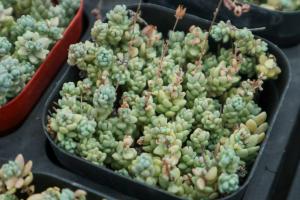Introduction
Tomatoes are one of the most commonly grown vegetables in home gardens. They are versatile, delicious, and healthy. While growing tomatoes, it is essential to help them produce better fruits. One such technique is topping tomato plants. But, is it really necessary to top tomato plants? Let's find out in this article.
What does "topping tomato plants" mean?
Topping is a technique of cutting off the tip of the main stem of the tomato plant. This practice is carried out when the plant is young and has grown up to a certain height. The principle behind topping is to remove the growing point of the plant, forcing it to stop growing vertically and focus on producing fruit.
When the tomato plant is topped, it puts its energy into developing a bushy structure with more lateral branches. The goal is to increase the number of fruits that the plant can produce. However, the yield may be slightly smaller from each individual fruit compared to plants that have not been topped. Therefore, it's essential to weigh the pros and cons of topping tomato plants.
When is it appropriate to top tomato plants?
It is best to top tomato plants when they have developed between 4 to 6 fruit trusses. This typically occurs when the plant has grown to about 4 to 5 feet tall. Topping tomato plants that have not developed well could negatively affect their yield. Therefore, it is crucial to wait for the right time before implementing this technique.
A good time to top the tomato plants is early in the morning on a dry day, so the plants have the whole day to recover from the shock of topping. Use sharp and sterile scissors or pruners to cut off the top of the plant, just above the last set of leaves of the final fruit truss.
Why should you top your tomato plants?
Topping tomato plants can help increase the yield by creating a balance between the vegetative and reproductive growth of the plant. These are the benefits of topping tomato plants:
Bushier plants with more lateral branches result in more fruit production.
Shorter plants make it easier to manage the plants and harvest fruits.
Topping can help to prevent the plant from becoming too tall and falling over under the weight of the fruits.
Removing the growing tip can help redirect the plant's energy towards fruit production.
Why should you not top your tomato plants?
Although topping tomato plants can be beneficial in many ways, there are a few reasons why you should avoid it:
Topping tomato plants can reduce the overall size of each fruit produced, thus affecting its market quality.
Plants that have been topped require more attention and care, including regular pruning and staking, to support their growth and development.
Plants that have been topped may be more susceptible to disease and pests.
The yields may be slightly smaller from each individual fruit compared to plants that have not been topped.
Conclusion
Topping tomato plants can be beneficial for increasing yield and reducing the risk of plant damage. However, there are specific conditions when the practice is most effective, and it requires more attention and care from you. Ultimately, the decision to top tomato plants should be based on your specific circumstances and gardening goals.

 how many times do yo...
how many times do yo... how many planted tre...
how many planted tre... how many pine trees ...
how many pine trees ... how many pecan trees...
how many pecan trees... how many plants comp...
how many plants comp... how many plants can ...
how many plants can ... how many plants and ...
how many plants and ... how many pepper plan...
how many pepper plan...
































